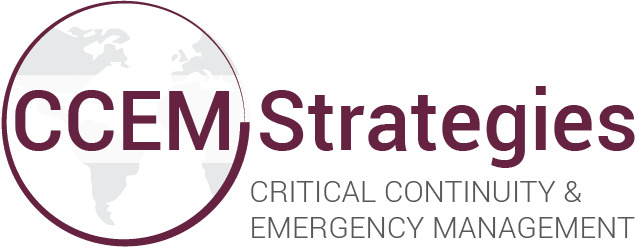Flooding is one of the most common, pervasive, and costliest natural hazards in Canada, with a history of causing major disasters. The risk of flooding tends to change based on the season as it can be caused by snow melt, sudden and aggressive rain storms, rain on snow events, or debris in waterways causing overtopping of banks or sudden redirection of the waterway. Recovering from flooding can be challenging, particularly as insurance coverage may be limited, extraordinarily costly, or unavailable depending on the type of flooding (i.e., sewer backup versus overland flooding).
The Role of Communities During FloodS
Responding to flooding is complex, especially when large areas and populations are impacted at the same time. Communities (First Nations, Towns, Villages, Districts, Counties, etc.) play a critical role in keeping the population safe and kickstarting successful recovery. The response to flooding could include tracking ongoing hazards and risks, deploying defenses and resources, issuing alerts and orders for evacuation, communicating messaging to members, and requesting support from partners, all while attempting to maintain the delivery of critical services. Meeting those responsibilities is challenging, but steps can be taken to increase the likelihood of success.
Here are four (4) steps your community can take:
Assess flood risks
Review and enhance flood plans
Strengthen defenses and prepare resources
Educate and inform the community
Assess and Understand Flood Risks
Flood risk assessments are crucial for community preparedness for flooding because they provide valuable information about the potential impact of floods in a given area. By analyzing factors such as topography, hydrology, and historical flood data, flood risk assessments can help communities identify areas that are most vulnerable to flooding.
This information can then be used to develop effective flood preparedness plans and mitigation strategies, such as building dikes or improving drainage systems. It can also help responders prioritize their resources and response efforts during a flood event, potentially saving lives and reducing property damage.
Review and Enhance Flood Plans
Your community already has emergency plans, and you may even have flood-specific plans. Review the plans and think about how flooding might impact your community. Who and what areas in your community are most vulnerable to flooding? Which parts of the plan and which procedures might be difficult to execute? Look back to the risk assessments and prioritize high-risk and high-vulnerability locations.
Some examples of topics to focus on during the review would be:
Rapid deployment of flood defenses (sandbags, dams, barriers, excavation works, etc.)
Emergency water (and wastewater) management
Notification and communication with members
Issuing evacuation alerts and orders
Evacuation route planning, with consideration of at-risk transportation routes
Evacuee assistance and reception center planning
Community re-entry planning, in the event of widespread evacuation
Flood debris management
As you review, look for places to enhance the plans and procedures. Incorporate lessons learned from previous seasons and seek opportunities to align with partners.
Strengthen Defenses and Prepare Resources
Floods can cause enormous damage to infrastructure, homes, and businesses, as well as putting people’s lives and safety at risk. Once flood waters arrive, normal routes of transportation and emergency responders may not be available. Floods can cause a cascade of other issues such as contamination, flowing debris, hazardous debris, and ground instability.
Taking proactive measures to strengthen flood defenses (dikes, levees, drainages, etc.) and pre-stage resources such as sandbags, temporary dams and barriers, pumps, and excavation equipment can improve your community’s readiness and resilience in the event of flooding.
Educate and Inform the CommunitY
Individuals can take steps to reduce the potential impacts of flooding on their lives and safety. Communities should seek to educate and inform their members about best practices and recommended actions during flooding before a flood strikes.
The Government of Canada’s Flood Ready web pages are a trusted source for helpful flood preparedness resources that could be shared in your community. Here are some example quick facts from the Flood Ready page:
Protect your basement by checking your sump pump, weather sealing your windows and doors, installing flood barriers, lifting things above the floodwater level, and checking that drains are clear.
2 in 10 Canadian homes are at risk of flooding, but most homeowners don’t know about it.
Floodwater can become polluted and carry waterborne diseases and hazardous materials.
Floods can cause mold to grow, and this can have long-term health impacts if you are exposed in your home.
Need Help with Risk Assessments, Planning and/or Engagement?
CCEM’s emergency management and business continuity team brings a diversity of experience and expertise to the task of helping communities prepare for, respond to, and recover from emergencies. Contact us today to get started or take the next step in your emergency preparedness.


